The real experiment that is being carried out in Japan
By Edward Hugh
The future never resembles the past – as we well know. But, generally speaking, our imagination and our knowledge are too weak to tell us what particular changes to expect. We do not know what the future holds. Nevertheless, as living and moving beings, we are forced to act. – John Maynard Keynes
Discussions of the population problem have always had the capacity to stir up public sentiment much more than most other problems.
– Gunnar Myrdal
Last Thursday the yen broke through the psychological threshold of 100 to the US dollar. On Friday the slide continued (see chart), even dropping very close to 102 to the USD at one point before strengthening slightly on the run in to the G7 finance ministers meeting.
The ostensible source of the sudden shift was a news release from the Japanese Ministry of Finance detailing the fact that Japanese investors bought a net total of 514 billion yen ($5.2 billion) in foreign bonds during the two weeks to May 3. Speculation had been rife that Japanese money funds would start to respond to continuing yen weakness and low Japanese yields by investing abroad. It is still far from clear that this is really going to happen in the short term, but nonetheless the news was sufficient to spark bets on more yen weakness.
Naturally the fall has drawn comment, especially during the run up to last weekend’s G7 meeting. US Treasury Secretary Jack Lew told CNBC that while Japan had “growth issues” that needed to be dealt with its attempts to stimulate its economy needed to stay within the bounds of international agreements to avoid competitive devaluations.”I’m just going to refer back to the ground rules and the fact that we’ve made clear that we’ll keep an eye on that,” he said in a comment that was widely seen as drawing a red line in the sand.
But really, what else do external observers expect? On 4 April Bank of Japan governor Haruhiko Kuroda announced he was going to increase the money base by 1% of GDP per month for the next two years. That is to say Japan’s monetary expansion will be incremental and continuous. Kuroda has even stated he will continue to increase the money base beyond the initial 24 months if the targeted inflation doesn’t come. It was always clear that the country was going to have a difficult time trying to generate inflation and that one of the knock-on consequences would be to continually weaken the yen. So you can’t realistically expect him to turn round and say now, “sorry, we didn’t know it would offend you so, I’m cancelling the policy”. Anyway, that move would throw financial markets straight into turmoil. Didn’t they understand what they were signing up to when they accepted “Abenomics” at the last meeting?
Obviously there is still a considerable amount of confusion around about what exactly Japan’s problem is, and what the policy is trying to achieve. I have tried to examine the more theoretical background to the problem in my A-b-e of economics post, but looking through the comments to that piece I realised that I was very tightly focused on one, examining only one aspect of what has come to be known as Abenomics, the inflation targeting component and its theoretical justification. Since ideas about what exactly it is the Japanese government is trying to achieve seem to be many and various, I thought it might be worth coming back and taking a second look at the experiment.
Three Arrows Into The Sunset
The aim of Abenomics is obviously to shake Japan out of its deflationary lethargy and return the country’s economy to a more pronounced growth path. In order to achieve this Japan’s Prime Minister has notoriously identified three policy arrows, or transmission mechanisms:
1) Aggressive monetary easing
2) Strong fiscal stimulus
3) An extensive programme of growth enhancing structural reforms
Achieving the inflation target is effectively the key objective of the first arrow, and weakening the yen is basically the transmission mechanism which achieves the objective. In fact while we have heard a good deal concerning the first two arrows, there is still relatively little on the table regarding the third one, as some commentators have started to wryly note.
Since there are many possible pathways along which these arrows may pass, it is probably worth taking a look at the big picture story in all its glory. To do that the following chart from Ritchie King at Quartz (who adapted it from a piece by Nomura economists) should serve as a very handy visual aid.
Central to the model is naturally the idea that generating inflation expectations can kick-start the economy. To help us think a little more about what that involves let’s take a quick look at a non-Japan-related chart – the Spanish retail sales one.
Notice the sharp spike in August 2012? Just what happened to cause that to happen? Essentially the Spanish government decided to raise consumption tax by 3 percentage points from September, so many consumers decided to advance their purchases to avoid the perfectly foreseeable coming inflation. The tax increase pushed up Spain’s CPI a couple of percentage points, and this effect will stay in the data till September 2013, when – guess what – the country might even fall into (irony of ironies) deflation. The reason the rise in the CPI may be followed by a slump into deflation is because the move was a deficit reduction one in an economy which is in ongoing deep recessionary mode, and evidently failed to restart the economy (no one thought it would) since retail sales then fell back onto their previous downward path. Hey, and guess what, Spain’s population just started to shrink. No possible connection I suppose?
A chart like this could be produced for a whole range of different economies on Europe’s periphery, but the point here is this, generating inflation expectations only advances sales, and doesn’t generate new ones, unless you implant the idea that the inflation will be permanent and ongoing, and will be followed by more inflation and so on, leading people to the conclusion that it is better to get rid of their money by spending it rather than holding on to it for their old age. Whoops!
The most important arrow to leave Shinzo Abe’s bow to date was fired by the steady hand of his helmsman, Bank of Japan governor Huruhiko Kuroda, and this has been the massive monetary easing one. According to the plan announced following their April 4 meeting the BoJ will conduct monetary market operations which will increase the monetary base on a monthly basis at the rate of about 5 trillion yen a month. In this way the base will be raised from 138 trillion yen at the end of 2012 to 200 trillion yen at end of 2013 and 270 trillion yen by the end of 2014.
This amounts to a massive increase in base money to around 50% of GDP (see chart from Citi analysts below), but what is important is to note the incremental and continuing character of the ramping up – by about 1% of GDP a month. And if this isn’t enough Bank of Japan governor Kuroda has already said he is willing to continue the easing process beyond the initial two years. In effect the policy will continue for as long as it takes. I think this is called a “the sky’s the limit” approach.
Yen Devaluation Means Exports Are Up
Anticipation of the move (which was announced by Abe in the autumn of last year) has been successful in driving down the yen, which has now fallen by around 30% against the euro since last summer (see chart below), and by around 25% against the dollar. Naturally, as we have been seeing at the end of last week, we should expect more of the same to come. Plenty of it. As much as it takes.
This reduction in the value of the yen has evidently helped exports, but not by that much so far. They were up 1.1% over a year earlier in March.
But Deflation Stubbornly Continues
Naturally the sharp rise in the cost of imports this produces is generating cost pressure, but not enough to kick the country off the deflation path so far.
Indeed the Bank of Japan’s favoured index, which includes energy but not the cost of fresh food, saw deflation accelerate in March to an annual price fall of 0.5%, the fastest rate in two years. And what inflation there is in the pipeline – electricity tariff hikes to cover mounting losses among the producers as energy import costs rise – was described by Bloomberg journalists Tsuyoshi Inajima and Brian Swint as the “wrong kind”, a statement which highlights the amount of confusion there is abroad about just what it is that the BoJ is supposed to be achieving.
To back their point they cite Klaus Baader, chief Asia Pacific economist for Societe Generale in Hong Kong to the effect that “this isn’t the kind of inflation we want in Japan to break the deflation mindset. We’d like inflation that is a reflection of higher wages, whereas this is pure cost inflation that decreases purchasing power.”
Maybe this cost push inflation is the “wrong kind” for some adherents of Abenomics, but it is the only kind they are going to get. Those who have gone through the structural lack of demand argument I advance in other posts will have realised that there is permanent downward pressure on costs in an environment of constant oversupply (this is why there is deflation in the first place) making inflationary wage increases difficult to envision. Indeed, as reported by another group of Bloomberg journalists (Masaki Kondo, Mariko Ishikawa and Yumi Ikeda), reality itself belies such expectations, since Japan’s wage index hit a post 1992 low in January, even if it has bounced back a little since.
Hardy evidence for looming wage pressure. Indeed the wage-increase-driven inflation argument in Japan curiously resembles a similar one advanced for Germany – in both cases adherents tend to forget that market economies are not centrally planned, even by central bankers, and while you can possibly target equities in a long term deflationary economy caught in a liquidity trap you can’t target wages.
Put another way, it simply isn’t clear what the mechanism which fuels the extra wages that some people are expecting actually is, or why company CEO’s should be influenced by massive liquidity in precisely this way.
The central problem in Japan is constant oversupply, given technical change and a stagnant market, and hence there is permanent price pressure on companies to maintain their share of what market there is. Thus it isn’t surprising to find the following statement in the latest Japan manufacturing PMI report:
“While supporting a rise in exports, a further impact of a weaker currency was to raise the price of imported raw materials. Latest data showed that average input costs rose for the fourth month in succession, and at the sharpest rate in over a year- and-a-half. Margins subsequently remained under pressure as a net fall in output charges was recorded for the twenty-first month in a row.”
So raw material prices rose for the fourth month in succession, while the final product (output) price fell for the twenty fourth successive month. If the demand isn’t there you simply can’t raise prices, or wages. That there isn’t a basic understanding of this reality after so many years of deflation simply astounds me. You could argue that making money cheap and plentiful might encourage people to borrow a bit more and consume more, but borrowing to give some more away in wages, under market economy conditions I simply don’t follow the logic.
In fact Japan’s banking system is awash with deposits, deposits which simply can’t find enough loans to finance, even at interest rates on long term loans which are under 1%. Deposits in the banking system exceeded loans by 186 Trillion yen in March (around 30% of GDP), and the situation is unlikely to change. Much more likely than handing out money to wagearners is that banks who are awash with cash invest in one the country’s private equity funds, for which Bloomberg reports there is growing interest. Those who have been around long enough to remember the Bull-Dog Sauce Co affair may be forgiven if they roll their eyes at this point.
If the idea is to put more money in peoples pockets so that they can spend more, then this is exactly what fiscal policy is there for. But Japan is already running a 10% deficit, and has sizeable deficits running back as far as the eye can see, and that approach hasn’t worked to date, so there is no reason to expect it will start doing so now.
Here Comes My Umpteenth Economic Recovery?
Later this week we will surely open our newspapers (on Thursday to be exact) to discover that the Japanese economy “bounced back to life” in the first three months of this year. Certainly it would be a huge surprise if it hadn’t. But much as any good news will be welcome we should never forget that Japan has been struggling with its problems since the property bubble burst over 20 years ago. So there has been more than one disappointment along the way.
The sad truth about the Japanese economy is that the demand just isn’t there. Indeed, despite a number of bullish “bravado type” articles (“Japan household spending surges as “Abenomics” gains momentum” -Stanley White and Kaori Kaneko, Reuters, or “Older shoppers lead Japan’s surge in consumer spending” – Ben McLannahan, Financial Times) nothing which has happened of late really changes that assessment. What consumption indicators we do have are often contradictory. Thus, despite the fact thathousehold spending “soared” 5.2 percent in March from a year earlier in price-adjusted real terms (clearly very good news), in the same month overall retail sales actually fell 0.3 percent from a year earlier. The key point is that neither of these pieces of data is any way conclusive of anything, and especially since the policy itself didn’t come into operation till April. To be convincing the consumption data would need to improve on a sustainable basis over months and even years.
Looking into the situation a bit further, though, it becomes clear that most of the positive dynamic in consumption is coming from big ticket and luxury items, and the reason for this isn’t hard to discern – Japan’s Topix stock index is up 65 per cent over the last six months, its strongest rally in decades. But it is important to bear in mind that four-fifths of Japanese households have never held any securities at all and 88 per cent have never invested in a mutual fund, according to a survey carried out last year by the Japan Securities Dealers Association. So while those who do hold shares will benefit from a “wealth effect” (another of the channels in the diagram above, monetary policy puts spending power in the hands of the top 20%) it’s always going to be a fairly minority affair.
But I would stress, since the BoJ measures were only announced on April 4 it is still far too early to be drawing any firm conclusions one way or the other.
It should also be borne in mind that Abe’s second arrow is a boost to fiscal stimulus, and naturally we would expect to see some positive impact on spending coming from that. When you couple this spending with the boost to exports which comes from the weak yen then it is quite clear the economy should be expected to perform better in 2013 than it did in 2012. But at the end of the day this isn’t really what this experiment is about, since no one doubts extra fiscal spending adds to growth, and Japan isn’t simply trying to emerge from a garden variety recession.
What matters is that the country needs to convincingly demonstrate its ability to “turn the corner” so as to start paying down all the sovereign debt it has been accumulating. Or at the very least it needs to generate sufficient inflation and growth as to reduce the size of the debt as a proportion of GDP. Maybe the economy can get a bit of “bang for the yen” from the various measures, but with the labour force set to decline for decades to come ongoing economic contraction becomes inevitable at some point. What matters then is the debt and the deflation tandem and how this can be put on a more stable dynamic without resorting to draconian spending cuts which will surely reduce the size of the economy even further. This is what the Abe experiment is about, and this is why the economy needs inflation, but on that front we are still very much in “wait and see” mode.
Domestic Critics Await The Day Of Reckoning
One of the issues facing Abenomics is that while the approach has become highly fashionable abroad (and especially among Hedge Fund managers), back home there are a growing number of critics raising doubts it will actually work. Doubts about the ability to reach the inflation target even start with the current board of the central bank itself. Board members are divided over the outlook for inflation, with some anticipating that consumer prices won’t even be rising at half the targeted rate two years from now. Former investment-bank economists like Takahide Kiuchi and Takehiro Sato, themselves recently appointed to the board, voted against the statement which set down that the bank believes inflation is likely to reach 2 percent in the latter half of the three-year BOJ forecast horizon. Governor Kuroda, however, is more optimistic and thinks the goal will be achieved in the 2015 fiscal year.
If the current board members have their doubts, those from the outgoing one tend to be even more scathing. Masaaki Kanno, now chief Japan economist at JPMorgan Chase in Tokyo put it bluntly to Bloomberg journalists, “It’s unrealistic — they won’t be able to reach their target in two years, or even in five.” Kuroda’s predecessor at the bank, Masaaki Shirakawa, is another who is far from convinced. Shirakawa sees deflation more as a symptom than a cause of Japan’s problems which, he argues, have important demographic roots.
“If there was a single thing that would have cleared the fog and solved all problems, Japan wouldn’t have been in this situation for 15 years,” he said in a speech on March 19, his last day in office. Journalists covering the Japan story might like to bear this in mind.
It is hard to disagree with Shirakawa, even though the former central bank board is being widely trashed. If demography is at the heart of the problem, it’s far from clear how massive monetary easing is going to solve it. In fact even Paul Krugman, intellectual godfather to Abenomics, sometimes seem to have his doubts. At one point he even said: “Here’s the thing, however: the economy won’t always be in a liquidity trap, or at least it might not always be there”. (Monetary Policy in a Liquidity Trap – NYT April 11 2013).
The use of that little word “might” is striking for such a bold experiment.
In fact once you look into it the Nobel economist seems to be hedging his bets all over the place. In the same article he says: “So, at this point America and Japan (and core Europe) are all in liquidity traps: private demand is so weak that even at a zero short-term interest rate spending falls far short of what would be needed for full employment”.
So its not just one problem, it’s at least three. But are all these liquidity traps the result of low fertility, or only some of them?
In an earlier article – The Japan Story (NYT February 5 2013) – he threw a bit more light on this, since he commented: “Oh, and what about the US relevance?………… What I think you can argue is that because we don’t share Japan’s demographic challenge, our liquidity trap is probably temporary, the product of an episode of deleveraging”.
Temporary???? Doesn’t that imply Japan’s may be permanent, which it is why he says it only “might” escape. And what about Europe, which is half US half Japan in demographic terms, will Europe’s liquidity trap be “semi-permanent”?
The thing is this, given all the doubt about the real roots of Japan’s problem, and the fact that it may well be permanent – as working age population slides there might be a permanent, structural excess of demand over supply – is it really justified to run such a high risk, all-or-nothing experiment? What makes people nervous is the thought that if the central bank can’t deliver on its promise then a loss of confidence might ensue, and all those dubious risky asset positions might unwind suddenly, just like an earlier set did in 2008.
Seki Obata, a Keio University business school professor who in January published a book “Reflation is Dangerous,” argues exactly this, that “Abenomics” is exposing Japan to considerable risk without any clear sense of what it can accomplish. Obata also makes the extremely valid point that there is simply no way incomes can rise across the entire economy because the baby boomers are now retiring to be replaced by young workers with only entry-level wages. Japan’s overall consumer spending power will therefore fall, rather than rise as Abe hopes.
“Individual companies may offer wage increases, but because of demographics it is simply impossible to increase the total amount that is paid out in wages,” says Obata. “On the contrary, that amount will shrink.”
Simple logic you would have thought, but logic in the face of irrational exuberance scarcely stops people in their tracks.
As is clear from all I am saying here, the gist of the criticism which is leveled at Abenomics is related to the the idea that the country’s problems have strong demographic roots. With this in view, many members of the central bank “old guard” feel they are being unjustly held responsible for not finding a solution to a problem which it may not be within the capacity of monetary policy to solve. In a 2012 speech – Demographic Changes and Macroeconomic Performance
– former BoJ governor Masaaki Shirakawa argues the following:
“Japan’s economic growth gradually slowed during the past two decades mainly for two reasons. In the former half of the period, the Japanese economy was hobbled by the crippling effect of the burst of the bubble. In the latter half, the rapid population aging hampered the Japanese economy through a variety of channels.”
Regarding inflation, he continues:
Seemingly, there would be no linkage between demography and deflation. But it may not be the case. A cross-country comparison among advanced economies reveals intriguing evidence: Over the decade of the 2000s, the population growth rate and inflation correlate positively across 24 advanced economies. That finding shows a sharp contrast with the recently waning correlation between money growth and inflation. How could we square those facts with each other?
Another former board member Takahiro Sekido, now a strategist at the Bank of Tokyo-Mitsubishi UFJ is even more direct: “The BOJ’s bond buying can’t resolve the shrinking population or aging of society. Because Japan’s productivity has only marginal room to rise, it’s necessary to prevent a decrease in population or to encourage more participation of female workers for economic growth.”
A comment which points to one evident conclusion, that Japan needs deep seated cultural changes, especially ones directed to greater female empowerment and more open-ness towards immigration. Hardly matters for central bank initiatives, and indeed ones for which Shizo Abe, who naturally has given his name to this new economic trend, is singularly ill equipped to carry through.
Managed Population Decline
Perhaps the most important thing which the whole Abenomics episode has brought to light is the urgent need to bring the existing corpus of economic theory somehow up to date with our modern realities. Despite all the talk of policies for “growth, growth, growth” a simple look at the population outlook in OECD countries, and especially the potential work force numbers means at some point or another economic growth will turn broadly negative. Valter Martins wrote about this in a post examining the Portuguese case I put up at the weekend, but former Bank of Japan governor Masaaki Shirakawa makes exactly the same point in the speech I mentioned earlier.
“Neoclassical growth theories normally do not distinguish the overall population from the working-age population for reasons of analytical simplicity. However, without taking into account the distinction between the two variables explicitly, the very challenges that Japan is currently faced with will be outside the scope of analysis.”
The key point is that when labour forces are growing, the extra employment adds positively to productivity to generate growth, when they are stationary labour is neutral and economic growth is equivalent to productivity growth, but when they are contracting then you have to subtract the rate of contraction from the rate of productivity growth to get your final GDP growth number.
“The [neo-classical] economic growth model supposes that everyone works at a given intensity. With a labor-augmenting technological change, in the long run steady state, per capita variables grow at the rate of technological change, and aggregate variables grow at the rate equal to the sum of population growth and technological change. In aging economies, including Japan, where the working-age population has started decreasing, the labor force also declines, given the participation rate being held constant. Because the scarce labor force imposes a natural constraint on labor supply, the marginal product of capital declines accordingly. As a result, macroeconomic growth would be impeded. With this idea in mind, the Japanese economic data in the past decade indicates that the workforce declined by 0.3 percent point, labor productivity increased by 0.8 percent point, and they add up to real GDP growth rate increase by 0.6 percent”.
Many of those who want to argue that miracle productivity performances make the demographic issue irrelevant normally simply fail to understand growth accounting dynamics or little about the productivity performance of developed economies over the last 20 years. Getting productivity growth of over 1% per annum is hard, very hard, and will become even more so with an increasingly elderly workforce. A point which isn’t lost on US growth theory expert Robert Gordon.
So the real point is there is an experiment being conducted in Japan, but the experiment isn’t Abenomics (which I suspect won’t work, and could end very badly). No, the experiment is about learning to grow old with dignity, not as individuals, but as societies. It is about managing debt in a time of deflation, about giving opportunities to the young, even while the force of the ballot box rides with the old, and about finding ways to ease that rate of work force decline to give some additional room to allow productivity to help, which means again helping the young, since they are the ones who start families.
I will close with a quote from Keynes, one which comes from the same talk from which I drew an extract to start this piece. Population decline has been seen coming for decades, there are few things about the future we can know with a higher level of probability, and yet we find the reality and its consequences hard to accept. Rather like our own finitude I suspect. Yet accept we must, since otherwise it will be hard to find the energy to act, and to make the changes we must make if we don’t want a difficult process to become an extraordinarily painful one.
“Perhaps the most outstanding example of a case where we have a considerable power of seeing into the future is the prospective trend of population. We know much more securely than we know almost any other social or economic factor relating to the future that, in the place of steady and indeed steeply rising level of population we have experienced for a great number of decades,we shall be faced in a very short time with a stationary or declining level. The rate of decline is doubtful but it is virtually certain that the changeover, compared to what we have been used to, will be substantial. We have this unusual degree of knowledge concerning the future because of the long but definite time-lag in the effects of vital statistics. Nevertheless the idea of the future being different from the present is so repugnant to our conventional modes of thought and behaviour that we, most of us, offer a great resistance to acting on it in practice”.
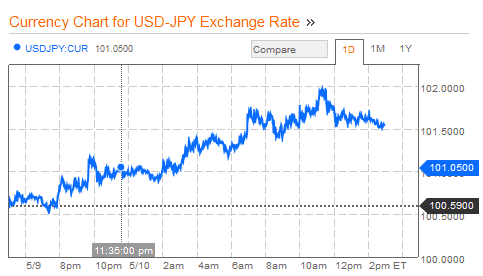
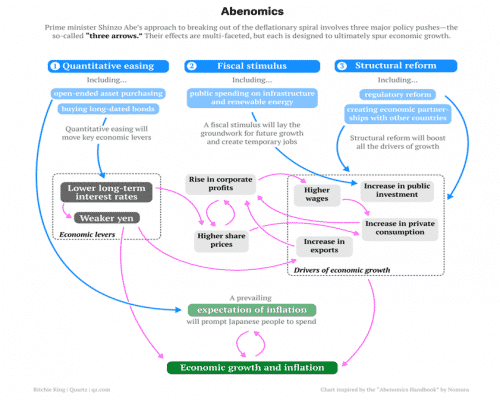
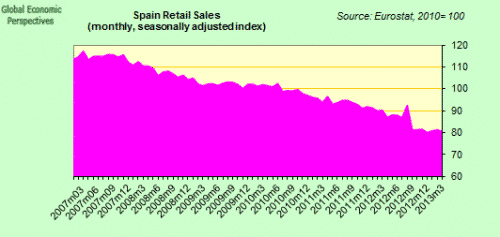
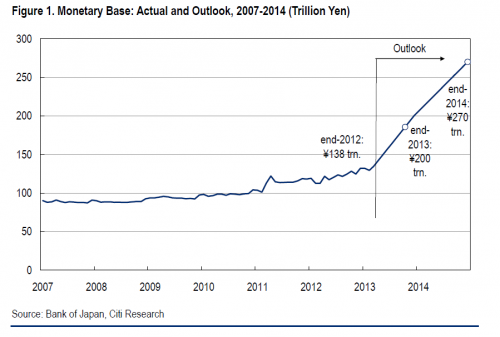
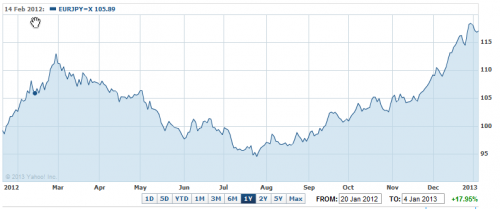
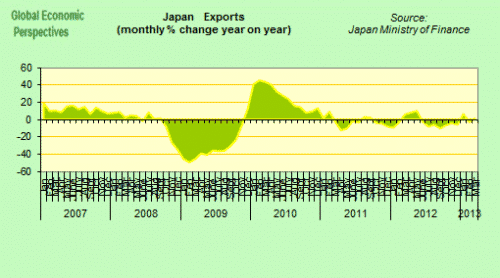
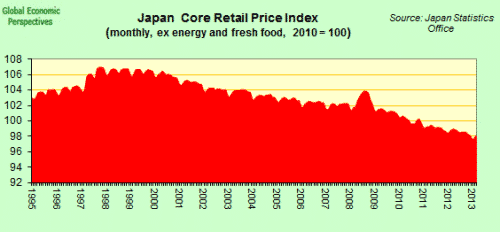
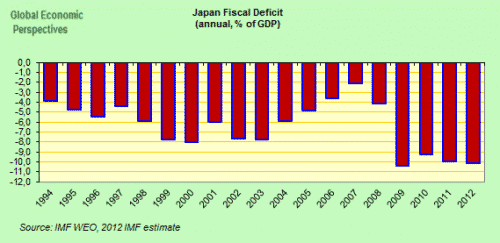
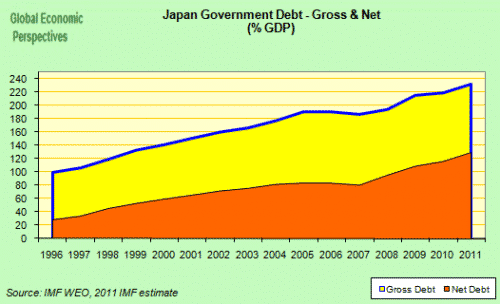
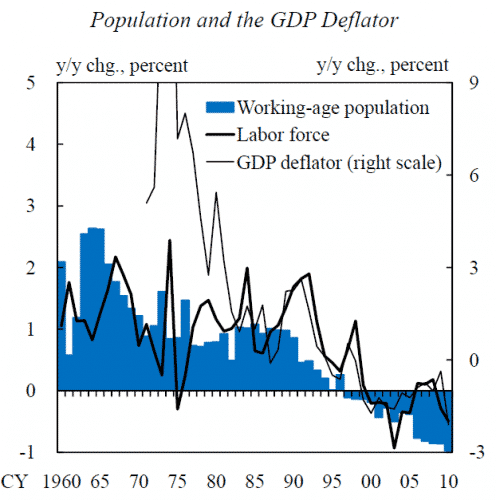
Comments are closed.